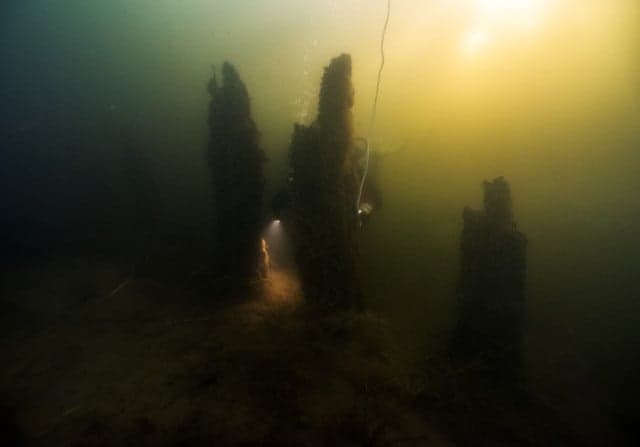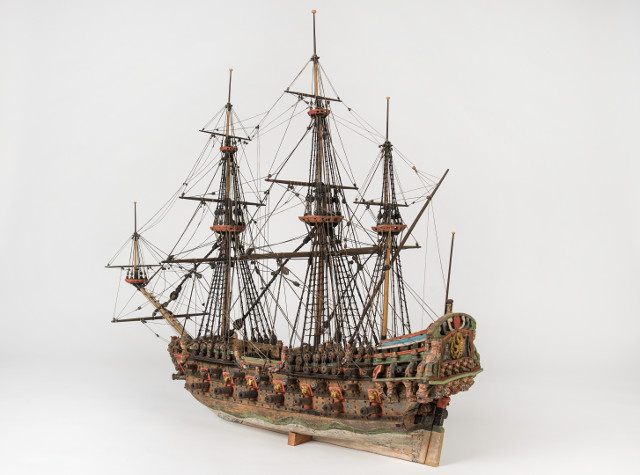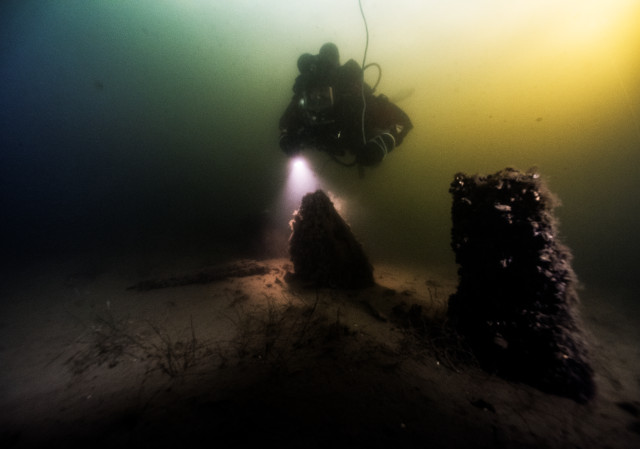Southern Sweden may have its own Vasa as historic shipwreck is identified

Marine archaeologists believe they have identified a shipwreck in the south of Sweden as an historic warship the same size as the one displayed in Stockholm's world famous Vasa musem.
More than 1.3 million people visited Stockholm's iconic Vasa last year, as tourists flocked to take in the remarkably well-preserved wreckage of the ill-fated ship which sank on its maiden voyage in 1628, before finally being salvaged in the 1960s.
And now, experts working believe they have found the wreckage of a vessel from a similar time period, the Blekinge, lying on the seabed at Karlskrona, southern Sweden.
"It was around the same size as the Vasa, about 45 metres long and with between 68-70 cannons (the Vasa had 64)," Jim Hansson, the curator of the archaeology unit at the Swedish National Maritime Museums told The Local.
"It’s the first ship that was built in Karlskrona, and was launched in 1682. It participated in, among other things, King Karl XII’s sea assault against Denmark in 1700."

A model of the Solen, which is a similar size as the Blekinge. Photo: Jim Hansson/Sjöhistoriska Museet
Like the Vasa, it seems the vessel was not particularly reliable at sea however. It ended up in its current location in 1713, but there is even information to suggest it previously ran aground near the island of Getskär in the north of the Bay of Bothnia in 1683, then was rescued and sailed again for a further two decades before it met its final fate.
READ ALSO: The Local takes a rare chance to go on board the Vasa
Hansson's theory is that the ship may even have been downed deliberately in order to use its canons to defend Karlskrona during Karl XII’s disastrous campaign against Russia, which would ultimately result in the downfall of the Swedish Empire, and the country's ruler fleeing to the Ottoman Empire.
"My early theory is that the ship may have been sunk deliberately and used as a sort of cannon barge while construction at Karlskrona stopped during the king's catastrophic expedition. They hadn't built and adequate defence, so it may have solved that," he explained.
Anyone hoping for a vessel in equally good condition as the Vasa will be disappointed however. Part of the ship appears to have been flattened by the construction of the stone pier at Karlskrona's shipyard, though it is thought that the lower sections have been better preserved.
"Part of her is embedded in deep layers of sediment. We believe there could be a relatively in-tact level of deck under it. The ship's not at all as well preserved as the Vasa, but the part which lies outside of the pier could be better preserved," Hansson noted.

Divers investigating the Blekinge. Photo: Jim Hansson/Sjöhistoriska Museet
Further research is likely to be carried out on the wreck, which is historically significant as it was the first ship to be built at Karlskrona shipyard, where there is still a naval base to this day.
Comments
See Also
More than 1.3 million people visited Stockholm's iconic Vasa last year, as tourists flocked to take in the remarkably well-preserved wreckage of the ill-fated ship which sank on its maiden voyage in 1628, before finally being salvaged in the 1960s.
And now, experts working believe they have found the wreckage of a vessel from a similar time period, the Blekinge, lying on the seabed at Karlskrona, southern Sweden.
"It was around the same size as the Vasa, about 45 metres long and with between 68-70 cannons (the Vasa had 64)," Jim Hansson, the curator of the archaeology unit at the Swedish National Maritime Museums told The Local.
"It’s the first ship that was built in Karlskrona, and was launched in 1682. It participated in, among other things, King Karl XII’s sea assault against Denmark in 1700."

A model of the Solen, which is a similar size as the Blekinge. Photo: Jim Hansson/Sjöhistoriska Museet
Like the Vasa, it seems the vessel was not particularly reliable at sea however. It ended up in its current location in 1713, but there is even information to suggest it previously ran aground near the island of Getskär in the north of the Bay of Bothnia in 1683, then was rescued and sailed again for a further two decades before it met its final fate.
READ ALSO: The Local takes a rare chance to go on board the Vasa
Hansson's theory is that the ship may even have been downed deliberately in order to use its canons to defend Karlskrona during Karl XII’s disastrous campaign against Russia, which would ultimately result in the downfall of the Swedish Empire, and the country's ruler fleeing to the Ottoman Empire.
"My early theory is that the ship may have been sunk deliberately and used as a sort of cannon barge while construction at Karlskrona stopped during the king's catastrophic expedition. They hadn't built and adequate defence, so it may have solved that," he explained.
Anyone hoping for a vessel in equally good condition as the Vasa will be disappointed however. Part of the ship appears to have been flattened by the construction of the stone pier at Karlskrona's shipyard, though it is thought that the lower sections have been better preserved.
"Part of her is embedded in deep layers of sediment. We believe there could be a relatively in-tact level of deck under it. The ship's not at all as well preserved as the Vasa, but the part which lies outside of the pier could be better preserved," Hansson noted.

Divers investigating the Blekinge. Photo: Jim Hansson/Sjöhistoriska Museet
Further research is likely to be carried out on the wreck, which is historically significant as it was the first ship to be built at Karlskrona shipyard, where there is still a naval base to this day.
Join the conversation in our comments section below. Share your own views and experience and if you have a question or suggestion for our journalists then email us at [email protected].
Please keep comments civil, constructive and on topic – and make sure to read our terms of use before getting involved.
Please log in here to leave a comment.